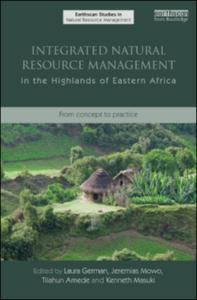Routledge Environment & Sustainability is the leading global publisher in the interdisciplinary field of Environment & Sustainability studies.
Routledge Environment & Sustainability (formerly: Earthscan) offers a broad array of titles from accessible introductions to supplementary readings and from important research to cutting-edge series for a range of academics, professionals and general readers. Our publications cover wide-ranging topics from climate change, natural resources and the environmental humanities to sustainable energy, business and development.
Members:
Resources
Displaying 1 - 5 of 12URBAN LAND TENURE IN BRAZIL: FROM CENTRALIZED STATE TO MARKET PROCESSES OF HOUSING LAND DELIVERY
Chapter 7 - Market Economy and Urban Change: Impacts in the Developing World Housing policy has always played a central role in the political agenda of successive governments in Brazil. For this reason, the sector provides a valuable barometer not only of the changing political economy of the country, but also the link between national priorities and the wider framework of international development trends. Within this context, this chapter examines recent shifts in Brazilian housing policy and provision evident in the transformation from welfare to market paradigms of development.
Cities and agriculture: developing resilient urban food systems
Wetlands of the Nile Basin: distribution, functions and contribution to livelihoods.
Wetlands occur extensively across the Nile Basin and support the livelihoods ofmillions of people. Despite their importance, there are big gaps in the knowledge about the current status of these ecosystems, and how populations in the Nile use them. A better understanding is needed on the ecosystem services provided by the difl:erent types of wetlands in the Nile, and how these contribute to local livelihoods.
Simulating current and future water resources development in the Blue Nile River Basin.
Agricultural water management (AWM) interventions in the Nile Basin are a key to improve agricultural production and productivity. AWM interventions can be categorized based on spatial scales, sources of water and type of technologies for water management in control, lifting, conveyance and application. Various combinations of these interventions are available in the Nile Basin. Successful application of AWM interventions should consider the full continuum of technologies in water control, conveyance and field applications.
Integrated natural resource management in the Highlands of Eastern Africa: From concept to practice
This book documents a decade of research, methodological innovation, and lessons learned in an eco-regional research-for-development program operating in the eastern African highlands, the African Highlands Initiative (AHI). It does this through reflections of the protagonists themselves—AHI site teams and partners applying action research to development innovation as a means to enhance the impact of their research.





